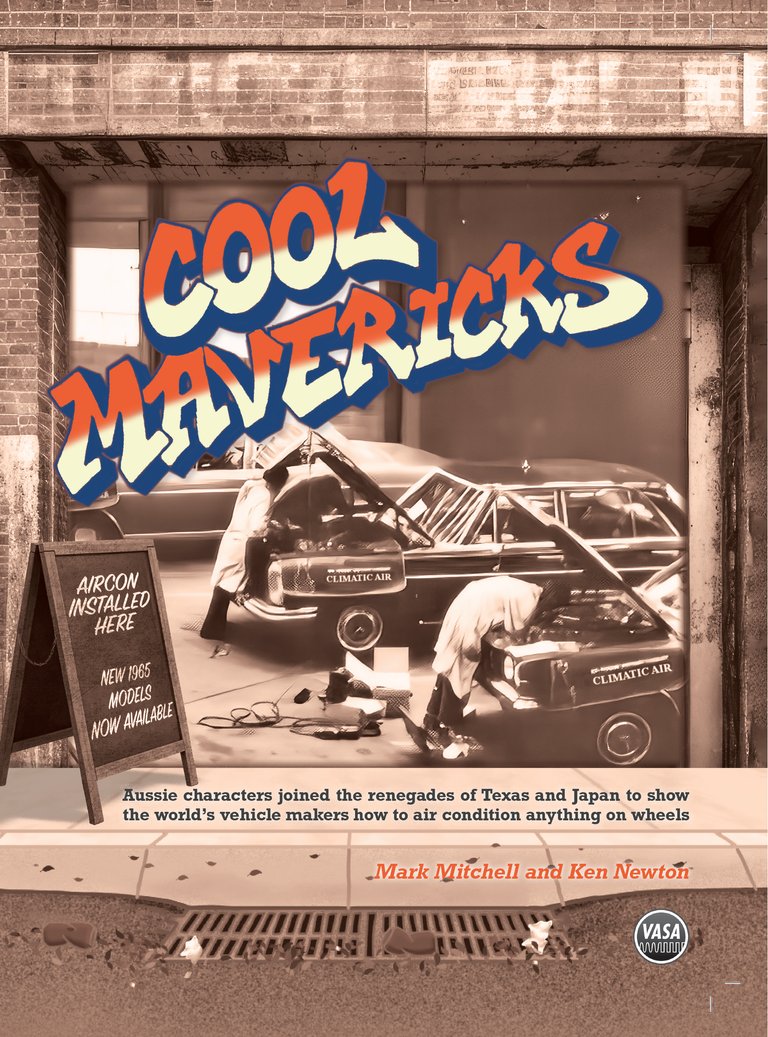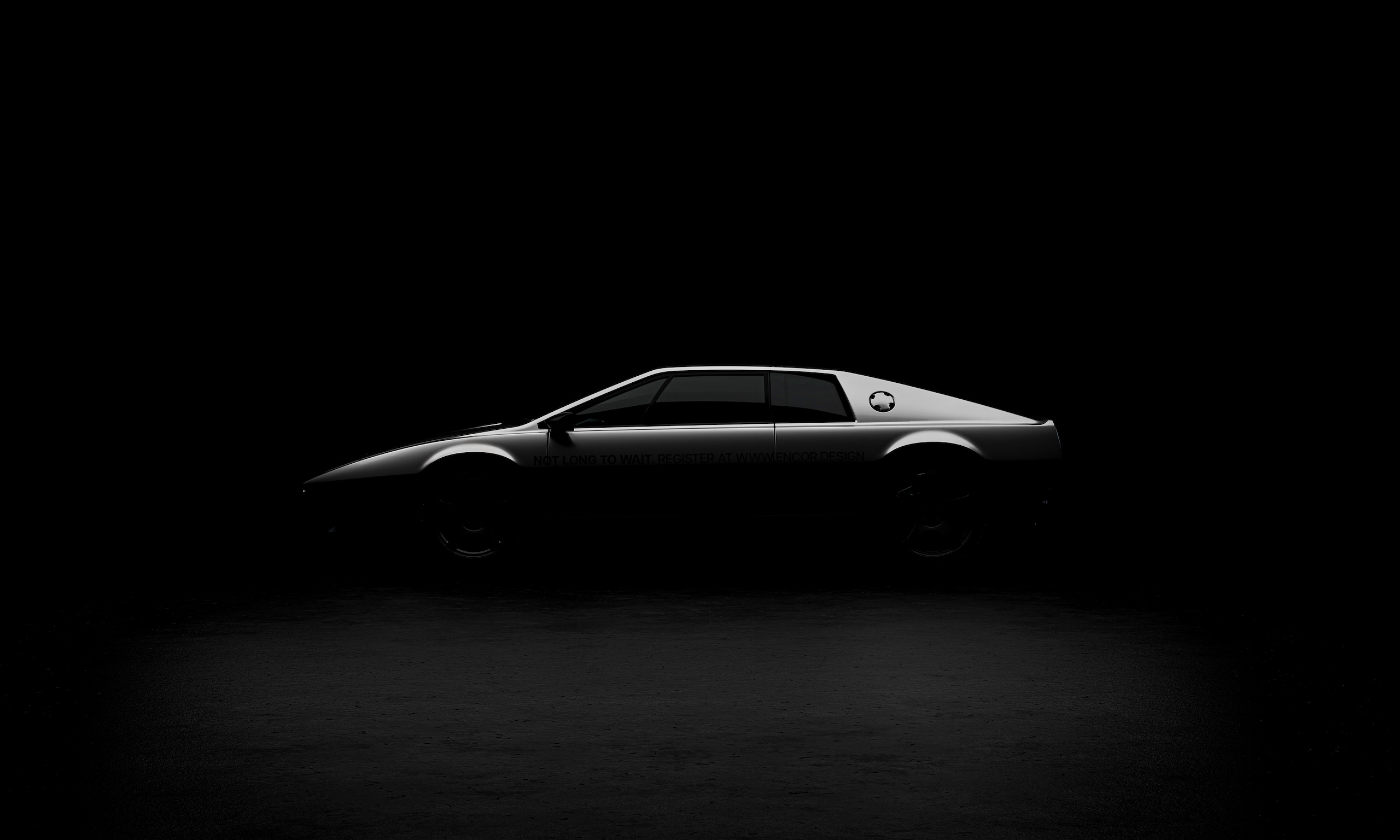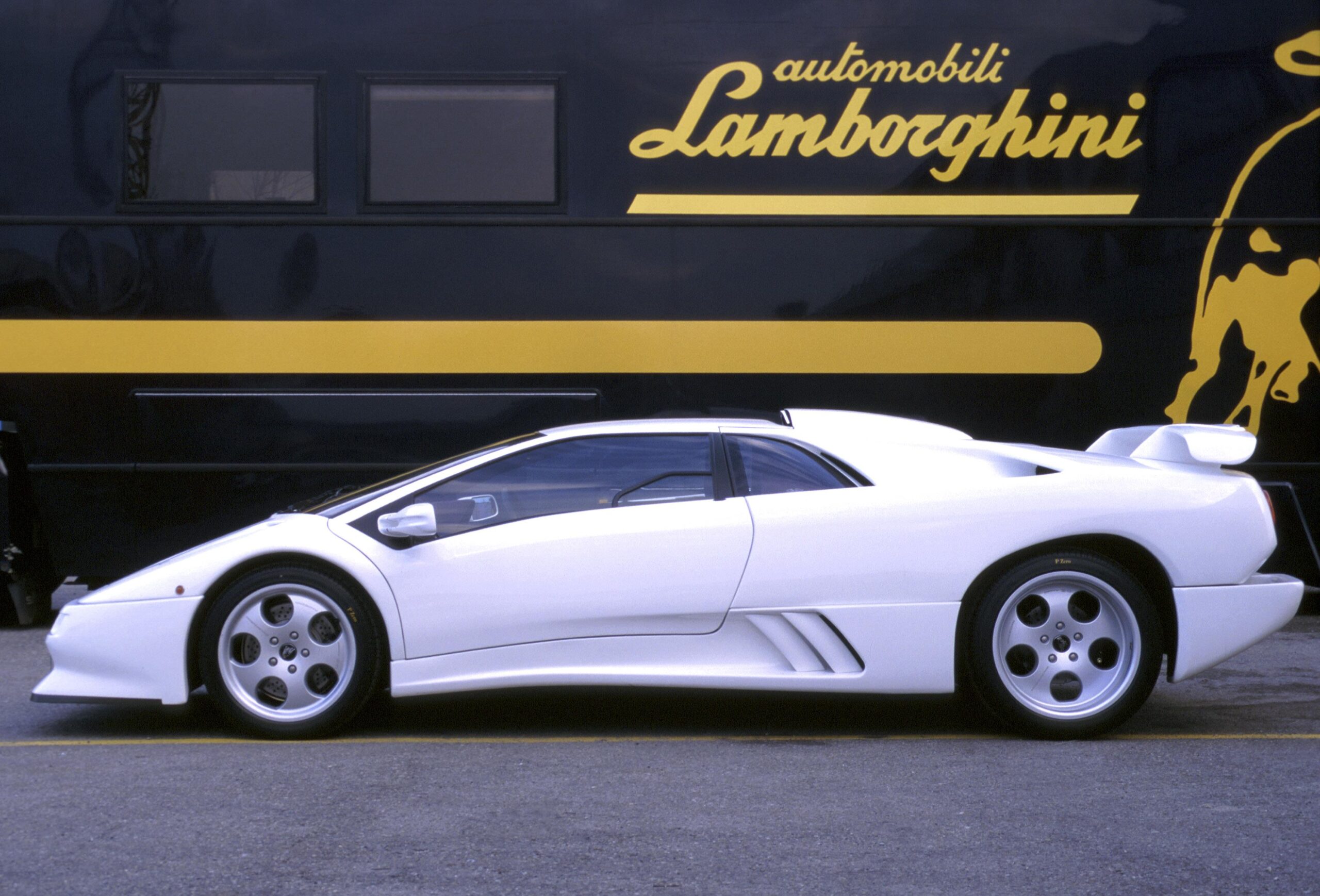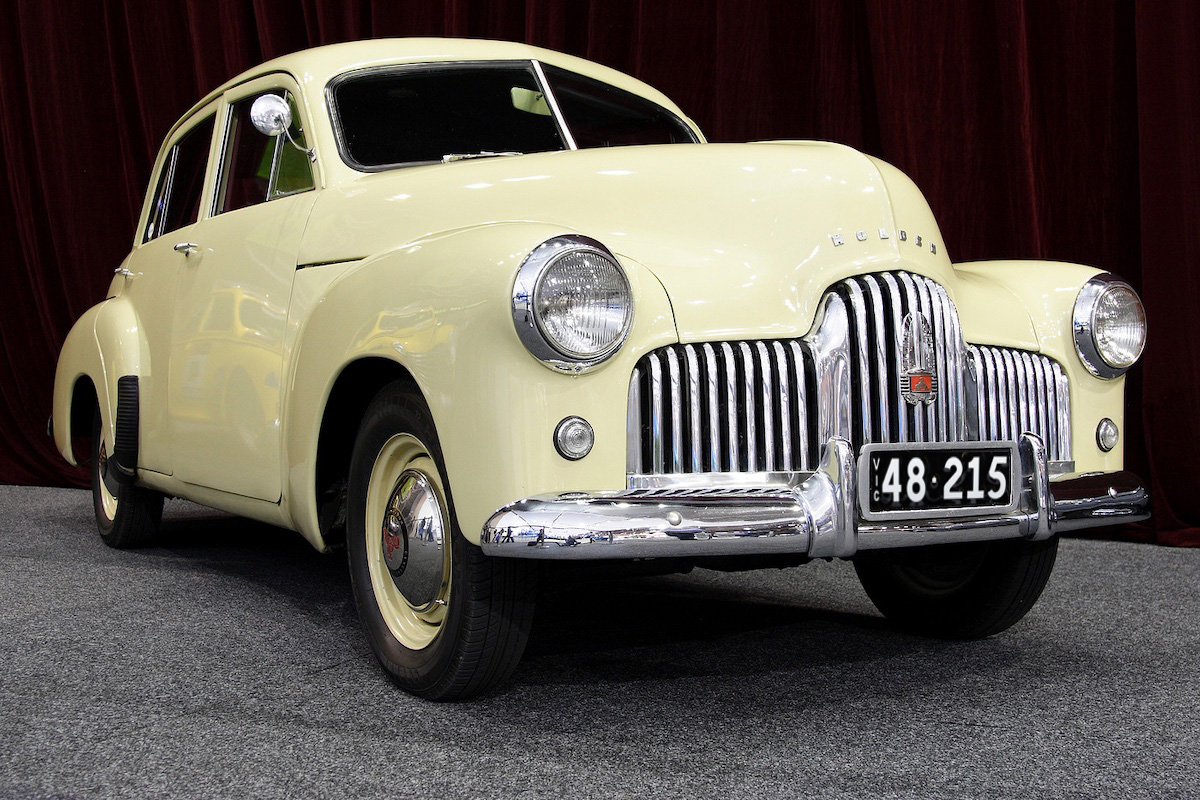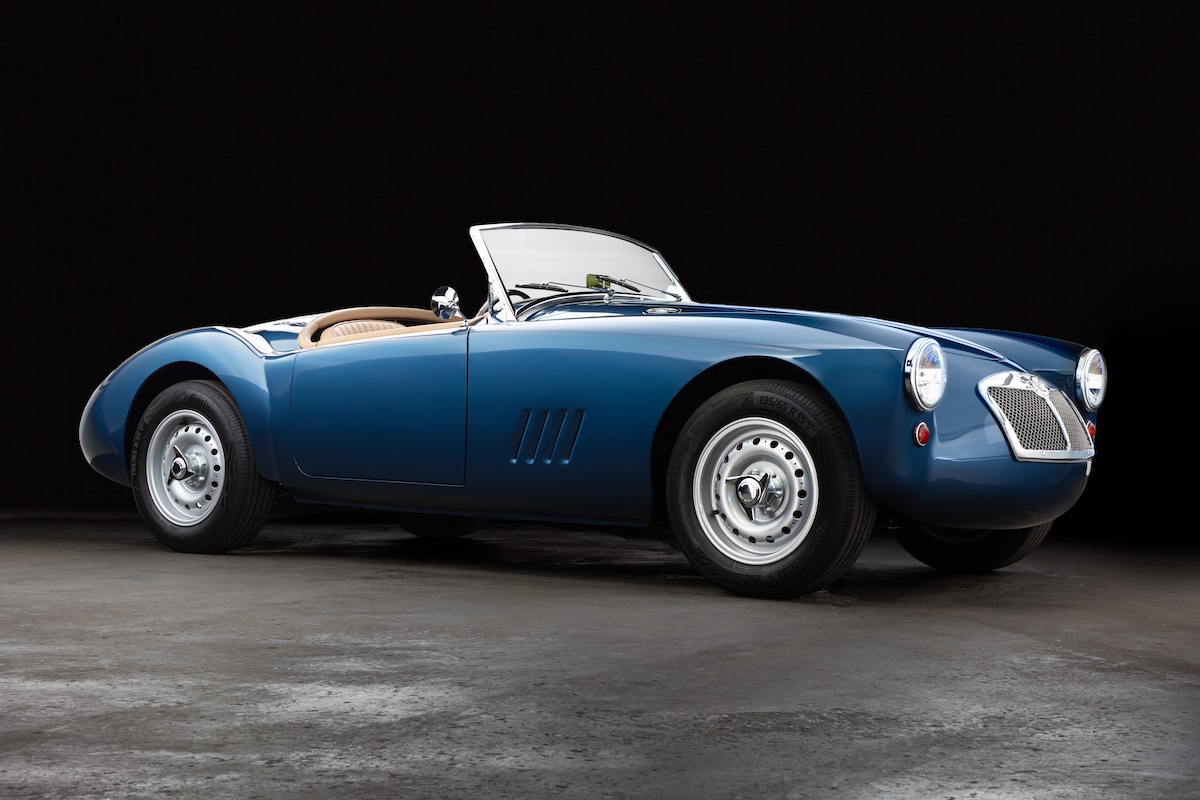Cool Mavericks is a new book that documents the fascinating history of automotive air conditioning in Australia and New Zealand, profiling many of the mavericks and entrepreneurs that embraced the idea long before the car industry woke up to it.
It’s hard to imagine today, in an era where air-conditioning has become a ubiquitous factory-fitted option, but there was once a time when the car industry didn’t want to know about the technology, leaving it to backyarders and small businesses to pioneer the technology.
The story of the emergence of the automotive air-conditioning industry is covered in Cool Mavericks, a new 700-page book by authors Mark Mitchell and Ken Newton that examines the history of mobile vehicle air conditioning, in Australia and New Zealand.
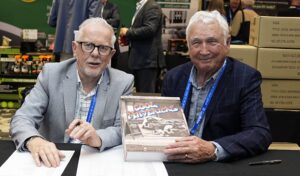
Mark and Ken say it’s not so much a book about a technology, but about the mavericks who made automotive air-conditioning happen. Spoiler alert; it wasn’t the car companies.
They say it’s also the first book to examine the beginnings of the industry from a global perspective, incorporating interviews with more than 100 industry pioneers, with countless historic documents and patents researched in America, Australia, Asia and Europe.
How The Big Car Makers Overlooked a Golden Goose
The big auto makers in America played a significant role in developing mobile air conditioning technology, but the first wave of fully enclosed vehicles was so successful that accessories like air conditioning weren’t considered necessary to stimulate an already excited market.
When fully enclosed vehicles came on the market (around 1933) nobody thought about air conditioning them. Air conditioning had barely been installed in buildings at that time. Because flexible hoses that could carry refrigerants hadn’t yet been invented, copper tubing was used in early automotive air conditioning attempts, with the rigid pipes often splitting while driving on rough road, and the toxic refrigerant gases posing a fatal risk to the vehicle occupants.
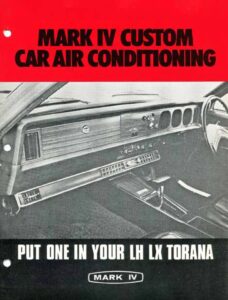
Early advertisment for Mark IV
It took a group of aftermarket mavericks in the hot and steamy state of Texas to drive the new industry forward, with Dallas/Fort Worth still regarded as the spiritual home of mobile air conditioning to this day.
With the climate in some parts of northern Australia not dissimilar to that of Texas, it wasn’t long before the mobile air conditioning baby that had been born in America migrated to Australia as an unruly teenager.
Aussie innovators began to embrace the idea but with no manuals and no training, these mechanics, auto electricians and opportunists had a lot to learn before they could make a dollar from an accessory that most people, including car makers, branded a one-hit wonder.
The industry was so new that there was no training and manuals were still being written. When parts arrived in Australia in crates from Texas, the smartest auto technicians in Australia stood around scratching their heads, trying to figure it out.
Nevertheless, demand for the new technology soon took off and the period from the late 1950s to the late 1980s was frenetic, innovative and lucrative for the workshops that took the punt and adopted the new trade.
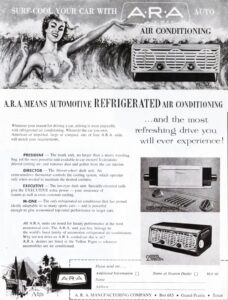
Early ad for ARA
By the 1970s and 1980s the demand for automotive air conditioning in Australia was so great that some workshops had up to 20 mechanics on the floor, busily installing systems in all manner of vehicles, with an inevitable rush of new business come high summer.
In Sydney and Melbourne, teams of drivers were employed just to ferry cars to and from dealership yards and installation workshops. Nearby these busy workshops, cars were queued in residential streets and private driveways, with empty lots commandeered to store waiting cars.
Thousands of imported cars were ferried in convoys from the wharves to small aftermarket workshops, to appear on the dealership floor next day, sporting “factory fitted air.” In fact, “factory air” was a common fib told by many dealerships with most systems fitted by the aftermarket.
Some shops becoming so adept at fitment they used two installers per car, one outside and one inside the vehicle, and were able to fit an entire system in 35 minutes.
Eventually, factories were established by aftermarket entrepreneurs in Victoria, New South Wales and Queensland and these came to dominate the design and supply of air conditioning in all makes of cars, farm machinery and service vehicles.
Some of these enterprises have since re-grouped under different ownerships and are still designing and manufacturing air conditioning for leading global car makers, although like so many Australian industries air conditioning manufacturing has long-since moved offshore.
Cool Mavericks is a project of VASA (Automotive Air Conditioning, Electrical and Cooling Technicians of Australasia), a not-for-profit peak body representing the technicians, professional service centres, suppliers and original equipment manufacturers of the automotive air conditioning, electrical and thermal management industry in Australasia. The book began as a gesture by VASA to acknowledge the contribution to the mobile air conditioning industry by the Australian pioneers, who took big risks to venture into an industry that never had a business plan.
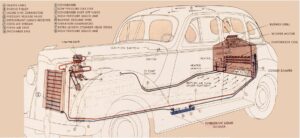
Packard illustration shows how A/C works
Authors, Mark Mitchell and Ken Newton have worked together on projects for more than 40 years. Their respective roles as foundation president and CEO of VASA, equipped them with an intimate knowledge of mobile air conditioning and the people who turned it into a marketing bonanza for more than a quarter of a century.
Cool Runnings is available exclusively via: https://vasa.org.au/
BETCHA DIDN’T KNOW: EIGHT FUN FACTS ABOUT AUTOMOTIVE AIR CON
-
Before the advent of automotive air conditioning cars were kept naturally cool through a process known as the ‘four and sixty’ – four windows down at 60 miles an hour.
-
Some used-car dealers of the old school would buy the factory A/C switch, drill a hole in the dash, and install the switch, connected to nothing. Many imported cars had no air conditioning, but had an A/C switch on the dash that simply allowed a flow of ambient air into the cabin. These car owners sooner or later appeared in aftermarket workshops asking for their air conditioning to be fixed because it was no longer blowing cool air.
-
Mark IV was a pioneer car air conditioning system born at the John E Mitchell plant in Dallas, Texas. It also became an Australian pioneer, popularised by the ‘Little Aussie Bleeder’ Norman Gunston who appeared in TV ads throwing a bucket of water over passengers in a top-down convertible in a busy Sydney street.
-
The famous UK instrument maker, Smiths, also became Australian air conditioning pioneers, after coming here on an undercover mission to improve instrumentation in Australian jet fighters.
-
The first production-line air-conditioned car was the 1940 model Packard in Detroit, but it was not truly factory-air – the aircon was designed and installed by a company better known for cooling beer, with ice.
-
Melbourne auto pioneer FJ Marland established Australia’s first commercial vehicle air conditioning production line, inspired by a trip to America where he rode in an air-conditioned car. His company air-conditioned Queen Elizabeth’s vehicle for her famous 1954 Australian tour, a Daimler Landaulette, as well as every ambulance in Victoria.
-
Australia’s biggest agricultural, railway, mining and defence vehicle air conditioner, Sigma Industries, beat off the traditional British suppliers of railcar air conditioning in 1966, winning the contract to air condition the Sydney-Perth railcars. In America, Sigma units were adopted on rail systems such as the famous Atchison-Topeka and Santa Fe lines and American commuters learned to choose carriages branded with Sigma air conditioning, because they were cooler than any others.
-
The global HVAC designer Air International Thermal Systems, now a major supplier to leading car makers including Land Rover, was born in Australia in 1967 when engineer Owen John, annoyed that his brand new XJ6 Jaguar was not air conditioned, bought a stack of parts and did it himself. Air International systems air conditioned Australian-made Fords and Holdens for many years.
Mark Quinlan



